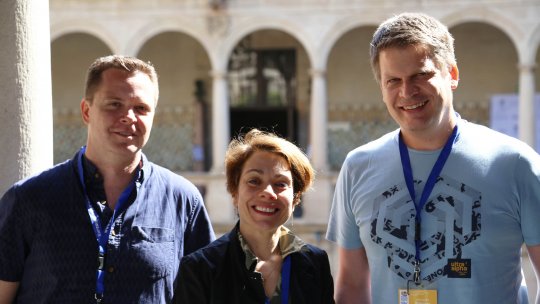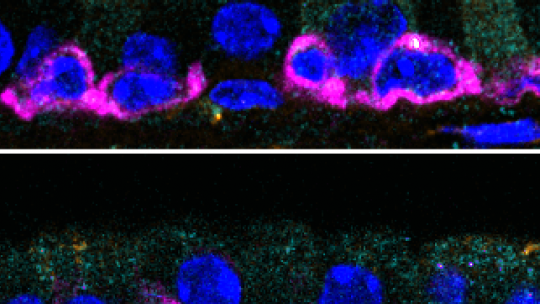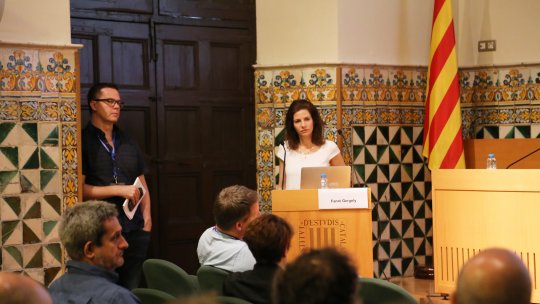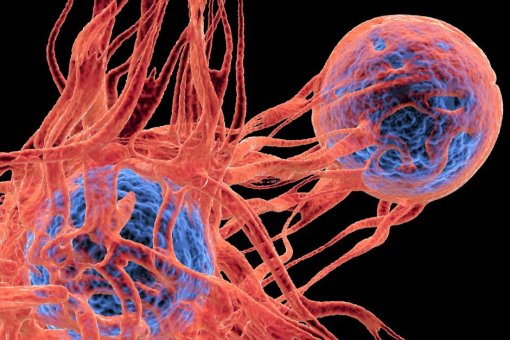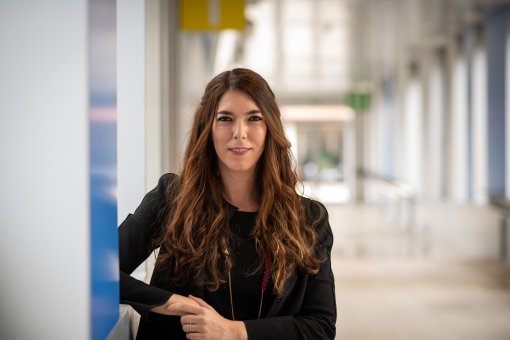Images
Participants

Contact

A conference organised by IRB Barcelona and the BBVA Foundation brings together leading international researchers devoted to two cell organelles that play key roles in health and disease.
Cancer and certain developmental disorders are characterised by impaired activity of these complex cell structures and defects in cell cycle control.
Cilia are the oldest known cellular organelle, first described in 1675. Centrosomes were discovered two hundred years later, in 1883. There is a direct relation between these two structures as centrosomes are required for the formation of cilia. Both organelles are tiny, thus hindering their study. However, advances in microscopy and proteomics in recent decades have slowly revealed their composition, structure and, above all, their contribution to a multitude of cell functions and their involvement in numerous diseases.
Within only a few years, the number of scientific articles devoted to centrosomes and cilia has increased significantly, and these cell structures are now a priority line of research in the health sciences. Invited by the Institute for Research in Biomedicine (IRB Barcelona) and the BBVA Foundation, scientists from around the world will be gathering at the Institut d’Estudis Catalans in Barcelona from 11-13 June to attend the Barcelona Biomed Conference “Centrosomes, cilia and cell cycle”. Organised by the researcher Renata Basto, from the Institut Curie in Paris, and two IRB Barcelona scientists, Jens Lüders and Travis Stracker, this event seeks to present the latest breakthroughs in the field and to generate a platform to discuss how recent knowledge contributes to unravelling the molecular bases of complex human hereditary diseases.
Multifunctional nanomachines
Cilia are nanomachines formed by more than 600 proteins, which are organised into diverse molecular complexes. Almost 500 proteins are required for cilia assembly and proper function. “One of the major challenges is to unravel how hundreds of proteins work together to ensure the proper assembly and function of these structures. This is a prerequisite for understanding how gene mutations cause disease and which mutations are involved,” explain Stracker and Lüders.
Centrosomes help to correctly segregate chromosomes during cell division. Having too few or too many centrosomes can disrupt cell division, leading chromosomes to break or be incorrectly distributed. This result in genomic instability, which, depending on the context, can cause cell death but also drive cancer development. In addition, centrosomes are required for the formation of cilia, which are motile or non-motile hair-like structures projecting from the cell surface. Non-motile cilia are involved in sensing and transmitting signals into the cell, while motile cilia participate in cell movement and transport. The most notable example is the sperm tail, which is a specialized type of cilium.
Defects in centrosomes and cilia have been observed to cause DNA damage and genomic instability in some settings. It has recently been discovered that cell cycle regulation is linked to the control of centrosome number and the formation of cilia. This finding takes on relevance in the context of human disease.
Malformations, rare diseases and cancer
Rare diseases typified by severe developmental defects can be caused by problems in cell cycle control, as well as in centrosomes and cilia. For example, Seckel Syndrome is a rare disease characterised by microcephaly (small brain at birth) and dwarfism. Advances in DNA sequencing have identified many genes that cause this condition, and it has been demonstrated that these genes are crucial for cell cycle control, particularly for copying DNA accurately and for centrosome formation. “This and other observations have led to the convergence of several fields with the aim to unravel how mutations in these different genes lead to similar diseases,” explain Stracker and Lüders, who recently identified that a protein involved in stem cell division participates in brain development and mutations in the gene cause microcephaly.
Cancer is a disease of uncontrolled cell growth, and most cancers are characterised by genomic instability, defects in cell cycle control and abnormal numbers of centrosomes. Again, the study of these observations has led to the convergence of the fields of cell cycle/genome stability and centrosome/cilia to study how these defects influence cancer. “Little is known about centrosome and cilia contribution, and there are still no targeted treatments for these structures in cancer,” they add.
Another large and heterogeneous group of diseases is linked to defects in cilia formation and ciliary signalling. Depending on the specific defect, these so-called ciliopathies can involve various skeletal and organ malformations, as well as blindness, impaired clearing of the respiratory tract, infections, kidney and heart disease, infertility, obesity and diabetes.
Future therapeutic targets
There are no treatments available for most rare diseases, and clinicians focus on the management of the symptoms. “Drug development for rare disease does not have, by definition, a big market and is therefore not attractive for pharma companies. However, collectively, these diseases are not rare, and they pose a significant socio-economic burden,” say the organisers of the event.
This panorama is now changing and major funding agencies, such as the European Commission, are backing research into rare diseases. “Together with increasing information about the mutations underlying disease, the molecular mechanisms responsible for many of these conditions are expected to be revealed in the coming years—an advance that is a prerequisite for the development of therapeutic strategies,” conclude Lüders and Stracker.
About IRB Barcelona
The Institute for Research in Biomedicine (IRB Barcelona) pursues a society free of disease. To this end, it conducts multidisciplinary research of excellence to cure cancer and other diseases linked to ageing. It establishes technology transfer agreements with the pharmaceutical industry and major hospitals to bring research results closer to society, and organises a range of science outreach activities to engage the public in an open dialogue. IRB Barcelona is an international centre that hosts 400 researchers and more than 30 nationalities. Recognised as a Severo Ochoa Centre of Excellence since 2011, IRB Barcelona is a CERCA centre and member of the Barcelona Institute of Science and Technology (BIST).

